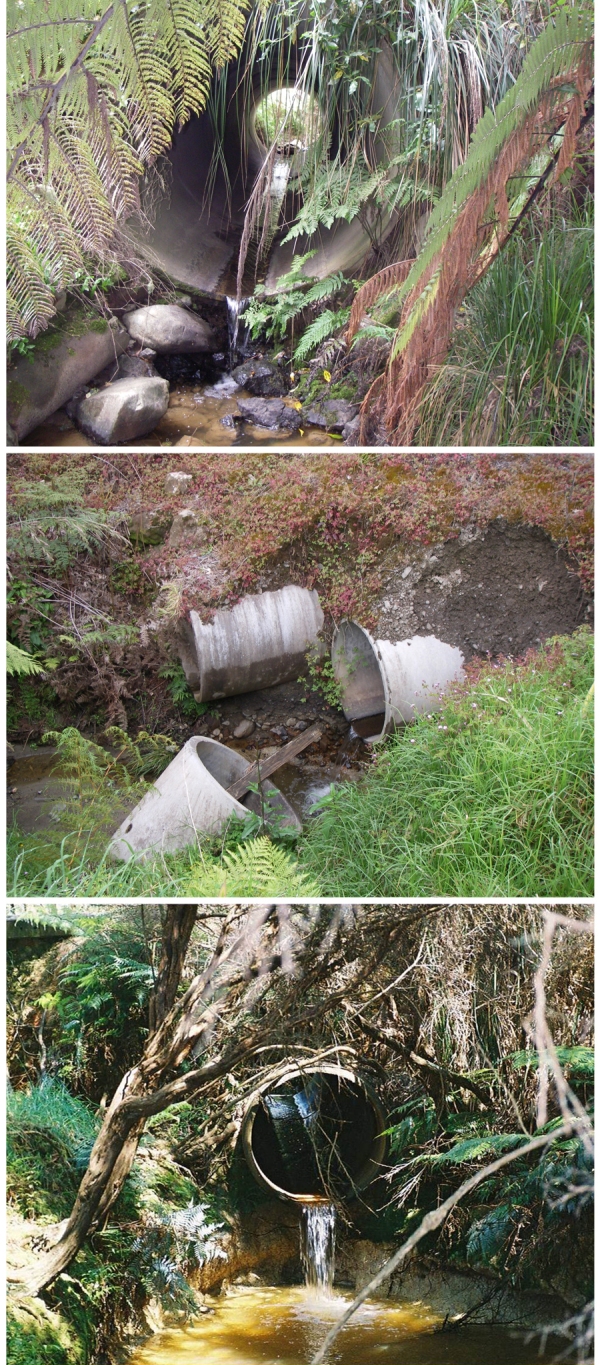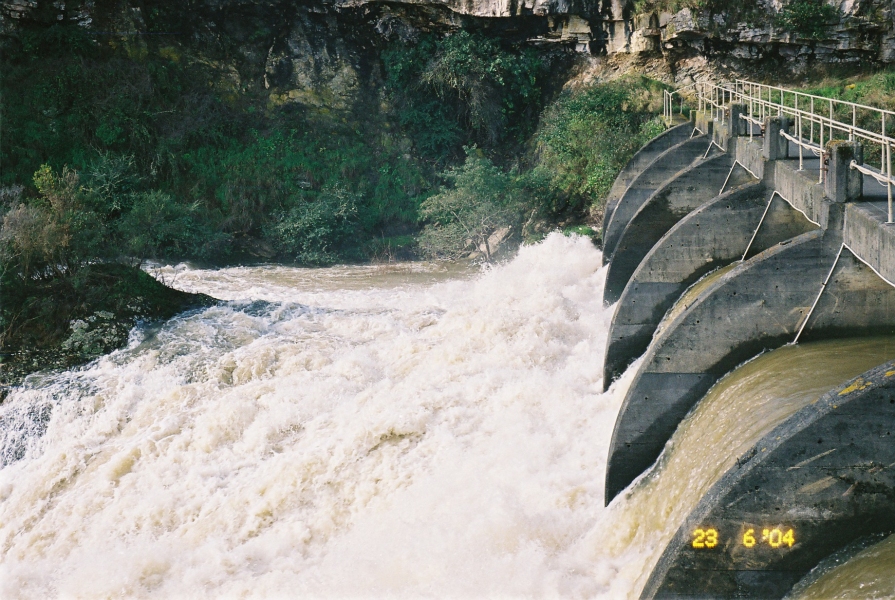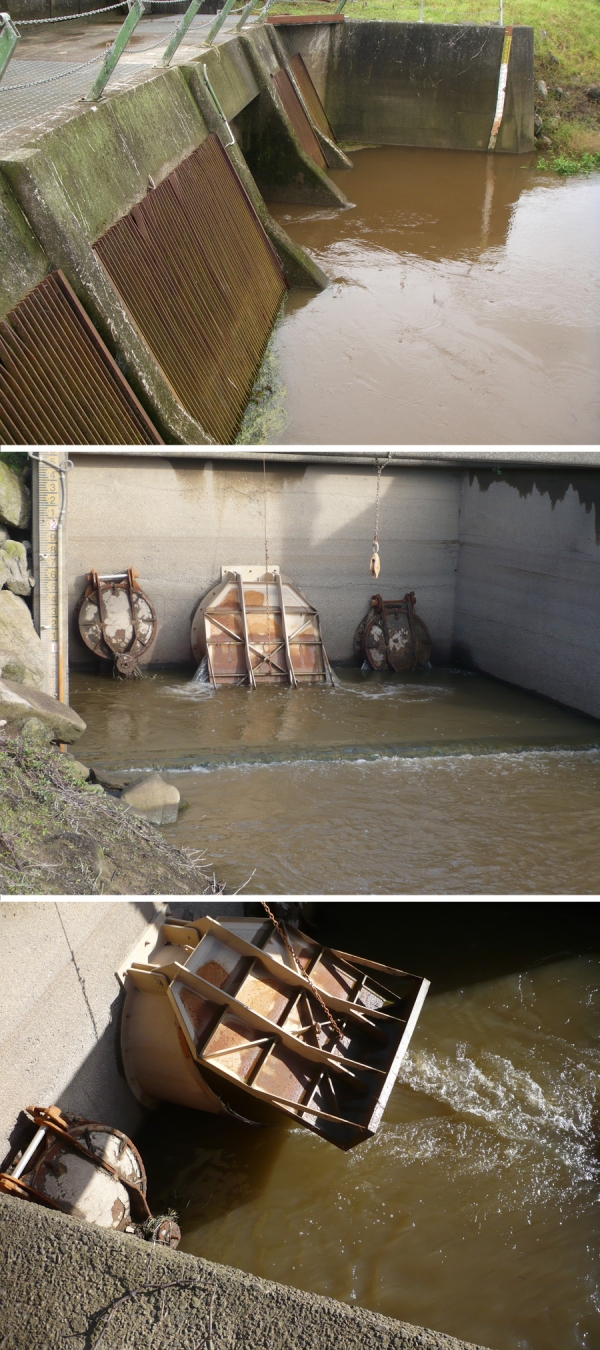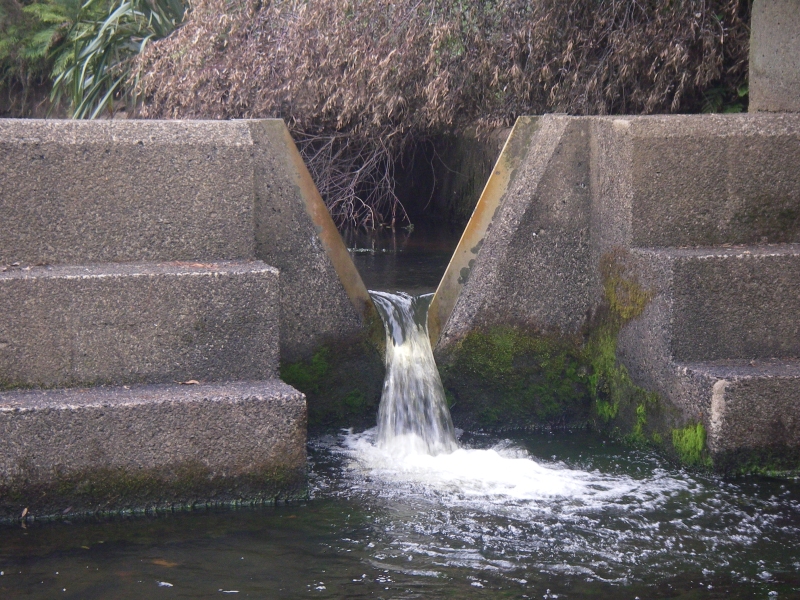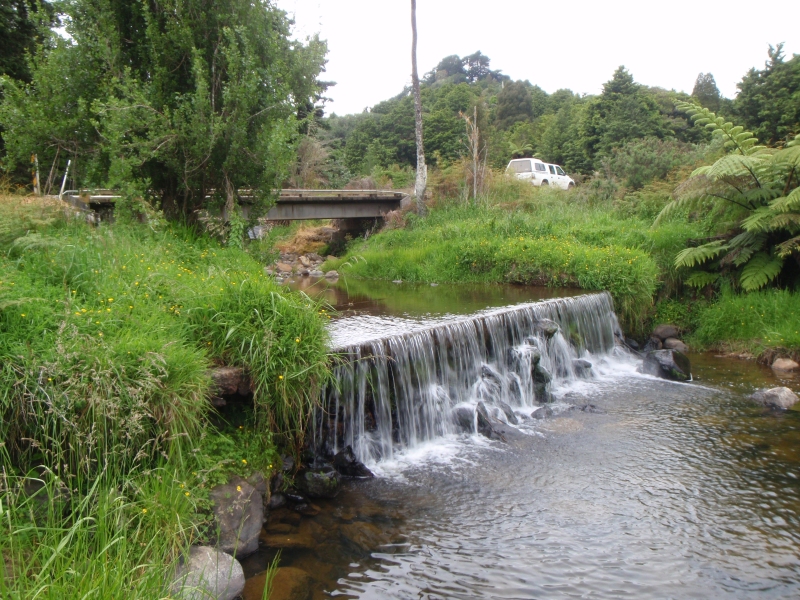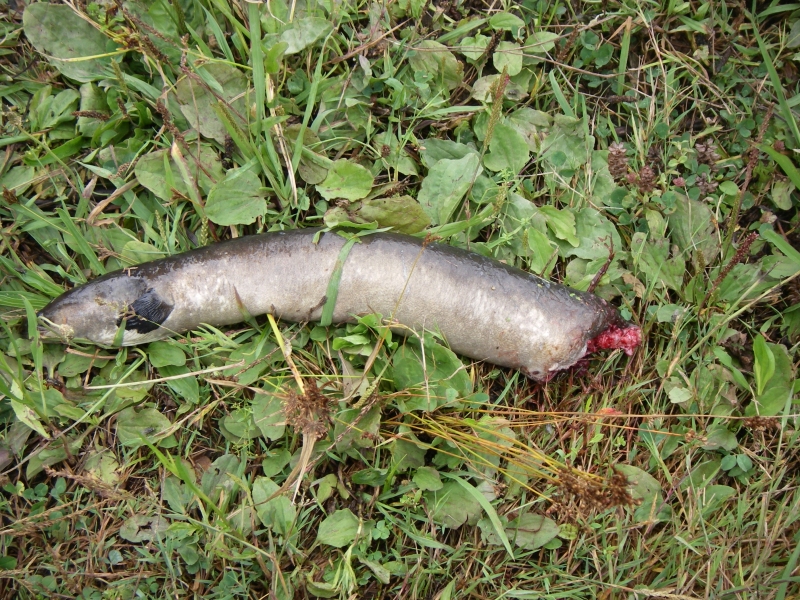One of the greatest threats to indigenous fish species which follow a catadromous life cycle (i.e., starting life at sea but then migrating into freshwater) are barriers that prevent or delay migrations between freshwater and marine environments.
Instream man-made barriers, such as culverts, weirs, flood gates and hydroelectric dams, are some of the factors thought to be contributing to the decline of eel populations worldwide.
Regulation 42 of the Freshwater Fisheries Regulations 1983 prevents fish passage from being impeded by an instream structure unless written approval for the structure is given by the Director General of the Department of Conservation.
Regulation 43 requires those seeking to construct dams to seek approval or dispensation from the Regulations by notifying the Director General, who may require that a fish pass is also constructed.
Under the 1991 Resource Management Act, there is also a general requirement for consent authorities to ensure that New Zealand's resources are managed in a sustainable manner: this broad definition would also include ensuring fish passage.
As such, two pieces of legislation are available to ensure fish passage throughout New Zealand, but enforcement of the legislation has generally been weak and there are many structures currently in existence which affect the passage of fish in New Zealand.
Although there is now legislation in New Zealand that makes it mandatory for indigenous fish passage to be provided at instream barriers, some owners have argued that the regulations do not apply to structures constructed before 1980 - when the legislation was enacted - even when consents are renewed.
In New Zealand, hydroelectric dams currently produce about 61% of the country's electricity needs and hydroelectric power generation is predicted to continue to be a significant source of energy in the future. Instream barriers such as hydroelectric dams and flood pumping stations impact tuna in two ways:
- obstructing the upstream migration of glass eels and elvers
- adversely affecting the safe passage of mature eels downstream.
Customary and commercial fishers concerned by dwindling stocks have managed to gain the co-operation of several dam operators, and there are now elver ladders and/or trap and transfer activities at many large barriers, which ensure that recruitment is occurring.
Since the 1999–2000 season about four million elvers a year have been transferred from the base of dams to upstream habitats in New Zealand.
However, although the issue of upstream passage is now well recognised and solutions have been implemented at various hydroelectric dams around New Zealand, relatively little has been done for downstream migrants.
Longfins tend to live further inland, and so are more affected by these types of barriers than shortfins.
Also, because of the large size of some of our migrant eels and the fast rotation speed of most of the turbines installed, virtually all eels attempting to pass through the turbines are killed.
Critical research continues to provide an understanding of the characteristics and behaviour of eel migration events in New Zealand.
This knowledge has informed the development of a suite of techniques that can be used at hydroelectric dams to facilitate downstream eel passage.
Given that factors out in the ocean that may adversely affect eel reproduction and migration are beyond our control, the only options to ensure the long term sustainability of our tuna populations are focused around maximising the number of eels that are able to safely reach the sea.
Ensuring that large female eels which live above hydroelectric dams are able to safely reach the sea should be an essential part of such a strategy.
References and further reading
Beentjes, M.P., Boubée, J.A.T., Jellyman, D.J., Graynoth, E. (2005). Non-fishing mortality of freshwater eels (Anguilla spp.). New Zealand Fisheries Assessment Report 2005/34. Ministry of Fisheries, Wellington. 38 p. http://fs.fish.govt.nz/Doc/17219/2005%20FARs/05_34_FAR.pdf.ashx
Boubée, J.A.T., Williams, E.K. (2006). Downstream passage of silver eels at a small hydroelectric facility. Fisheries Management and Ecology 13: 165-176. http://onlinelibrary.wiley.com/doi/10.1111/j.1365-2400.2006.00489.x/abstract
Boubée, J.A.T., Mitchell, C.P., Chisnall, B.L., Bowman, E.J., Haro, A. (2001). Factors regulating the downstream migration of mature eels (Anguilla spp.) at Aniwhenua Dam, Bay of Plenty, New Zealand. New Zealand Journal of Marine and Freshwater Research 35: 121-134. http://www.royalsociety.org.nz/publications/journals/nzjm/2001/009/
Boubée, J., Chisnall, B., Watene, E., Williams, E., Roper, D., Haro, A. (2003). Enhancement and Management of Eel Fisheries Affected by Hydroelectric Dams in New Zealand. In: D. A. Dixon (Ed). Biology Management and Protection of Catadromous Eels, pp. 191-205. American Fisheries Society, Bethesda, Maryland, USA.
Dixon, D.A. (2003). Biology, Management and Protection of Catadromous Eels. American Fisheries Society, Symposium 33, Bethesda, Maryland. 388 p.
Martin, M., Stevenson, C., Boubée, J., Bowman, E. (2009). Recruitment of freshwater elvers, 1995–2009. New Zealand Fisheries Assessment Report 2009/58. Ministry of Fisheries, Wellington. 44 p. http://fs.fish.govt.nz/Doc/22122/09_58_FAR.pdf.ashx
MED (2003). Ministry of Economic Development. Energy data file July 2003.
Mitchell, C., Boubée, J.A.T. (1992). Impacts of turbine passage on downstream migrating eels. New Zealand Freshwater Fisheries Miscellaneous Report No.112. Rotorua, New Zealand: Fisheries Research Centre.
Palmer, D., Boubée, J.A.T., Mitchell, C. (1987). Impingement of fish and crustacea at Huntly Thermal Power Station. New Zealand Freshwater Fisheries Report No 91. 40 p.
Watene, E.M., Boubée J. (2005). Selective opening of hydroelectric dam spillway gates for downstream migrant eels in New Zealand. Fisheries Management and Ecology 11: 69-75. http://onlinelibrary.wiley.com/doi/10.1111/j.1365-2400.2004.00422.x/full
Watene, E., Boubée, J., Haro, A., Roper, D. (2003). Downstream Movement of mature eels in a hydro-electric reservoir in New Zealand. In: Dixon D. (Ed.). Biology, Management, and Protection of Catadromous Eels. American Fisheries Society Symposium 33: 191-205.

